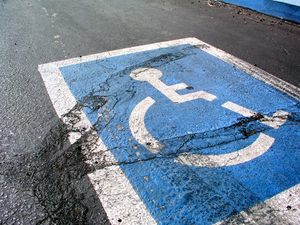Finding out that your loved one has been diagnosed with an aggressive form of Parkinson’s disease can be life altering. Understanding what this diagnosis means can be difficult. Often, doctors do not like to divulge on the details, and this can make the experience even more complicated for you, and for the one you love. This article will allow you to gain valuable insight on how to cope from an author who has personally dealt with this situation.
One of the hardest parts of learning how to help your loved one function with this disease comes in the form of a communication barrier. Those who experience the harsher side of Parkinson’s (which is rare, but often devastating) will begin to lose some or all aspects of their motor functions, including the ability to speak. Linda Miller, a woman from the southern portion of Georgia who fought this disease bravely for two years, described it as feeling paralyzed all throughout her face. She stated that this was more frustrating than losing all other motor functions. To overcome this obstacle, she used a dry erase board that had a list of all of the letters of the alphabet attached to the top of it. She would point to each large print letter and have someone else write that letter on a separate sheet of paper until her sentences were written out. Also included on her list of letters were signs for “spaces,” along with commas, periods, and so on. As writing was out of the question, pointing to a letter worked when all else had failed. Also, she began to make use of the keyboard. Reading her emails became a way of communicating with her after a long, silent void for her family members. This, too, was far easier than attempting to speak or write out what she had wanted to say.
If motor functioning has deteriorated beyond this point, most patients may still be able to slightly squeeze someone else’s hand, even if they appear disoriented or are not able to open their eyes. Although this form of communication is very limited, it is comforting for the patient to be able to at least answer “yes” or “no” questions through this somewhat light effort. When the desire to communicate to family members and loved ones is overwhelming, this simple task can greatly alleviate pressure and frustration on the part of both parties.
When motor skills have even just started to show some signs of failure, it is imperative that the Parkinson’s patient be equipped with the proper emergency call buttons. This will usually be in the form of a small, convenient “button box” attached to a necklace that can be worn around the neck, and often can be hidden inside the shirt if it is so desired. If the patient were to experience a fall, which can occur even on flat surfaces, it can be almost impossible for them to gain control and rise again, especially if injuries have been inflicted. This form of action must be taken before the patient has a fall, not after. Aggressive forms of Parkinson’s can make a patient appear to be fine on one day, and not the next, therefore making it almost impossible to predict the first fall.
Finally, we must touch upon a difficult area of this topic. If your loved one has, after all treatment options have been exhausted, reached a point where they are in fact no longer to appear “awake” (eyes stay constantly shut), it is important to remember that this disease affects the body, not the mind. This means that the patient still has emotions, and can still hear and understand what is going on around them. They understand what is happening to them, and it is likely that they will need comfort. You would not want to leave them alone for unnecessarily long periods of time, even though they cannot return any conversation with you. They will need entertainment, just as always, although perhaps in a lighter form. Feel free to read to them, turn on their favorite TV or radio programs, or to just sit and talk to them. It will be comforting to you both. Also keep in mind that this person will still need to have a say in these types of things, so try using the “hand squeeze” method to determine what form of entertainment they might desire. Remember not to over-exhaust your patient, and keep the number of questions down to a minimum whenever possible.
Perhaps the most important message that the previously mentioned Linda Miller wanted to convey was this….keep in mind that these patients are people. They were young once, and had (and still have) desires, laughs, tears, and wisdom to share. Their lives did not end when they were diagnosed, and they desire and deserve to be treated like any active human beings, just as they were before. Mrs. Miller once said that it would be wonderful if people who had lost the ability to communicate in this manner had pictures of themselves as healthy people attached to their lapels in order to remind others that they still had feelings. It is likely that the one thing that you must keep in mind in order to help your patient cope appropriately is to always treat that person with the utmost dignity and respect. This will ensure that you both remain as comfortable and happy as possible during this challenging adjustment.


